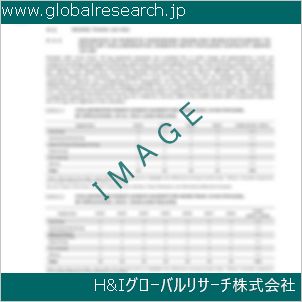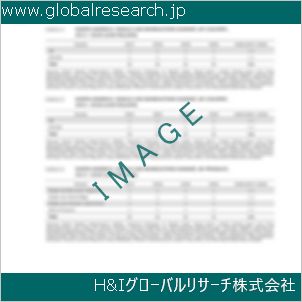Table of Contents
1 Industry Overview of Stearicacid
1.1 Definition and Specifications of Stearicacid
1.1.1 Definition of Stearicacid
1.1.2 Specifications of Stearicacid
1.2 Classification of Stearicacid
1.3 Applications of Stearicacid
1.3.1 Nuclear Application
1.3.2 Non-Nuclear Application
1.4 Industry Chain Structure of Stearicacid
1.5 Industry Overview and Major Regions Status of Stearicacid
1.5.1 Industry Overview of Stearicacid
1.5.2 Global Major Regions Status of Stearicacid
1.6 Industry Policy Analysis of Stearicacid
1.7 Industry News Analysis of Stearicacid
2 Manufacturing Cost Structure Analysis of Stearicacid
2.1 Raw Material Suppliers and Price Analysis of Stearicacid
2.2 Equipment Suppliers and Price Analysis of Stearicacid
2.3 Labor Cost Analysis of Stearicacid
2.4 Other Costs Analysis of Stearicacid
2.5 Manufacturing Cost Structure Analysis of Stearicacid
2.6 Manufacturing Process Analysis of Stearicacid
3 Technical Data and Manufacturing Plants Analysis of Stearicacid
3.1 Capacity and Commercial Production Date of Global Stearicacid Major Manufacturers in 2023
3.2 Manufacturing Plants Distribution of Global Stearicacid Major Manufacturers in 2023
3.3 R&D Status and Technology Source of Global Stearicacid Major Manufacturers in 2023
3.4 Raw Materials Sources Analysis of Global Stearicacid Major Manufacturers in 2023
4 Capacity, Production and Revenue Analysis of Stearicacid by Regions, Types and Manufacturers
4.1 Global Capacity, Production and Revenue of Stearicacid by Regions 2019-2024
4.2 Global and Major Regions Capacity, Production, Revenue and Growth Rate of Stearicacid 2019-2024
4.3 Global Capacity, Production and Revenue of Stearicacid by Types 2019-2024
4.4 Global Capacity, Production and Revenue of Stearicacid by Manufacturers 2019-2024
5 Price, Cost, Gross and Gross Margin Analysis of Stearicacid by Regions, Types and Manufacturers
5.1 Price, Cost, Gross and Gross Margin Analysis of Stearicacid by Regions 2019-2024
5.2 Price, Cost, Gross and Gross Margin Analysis of Stearicacid by Types 2019-2024
5.3 Price, Cost, Gross and Gross Margin Analysis of Stearicacid by Manufacturers 2019-2024
6 Consumption Volume, Consumption Value and Sale Price Analysis of Stearicacid by Regions, Types and Applications
6.1 Global Consumption Volume and Consumption Value of Stearicacid by Regions 2019-2024
6.2 Global and Major Regions Consumption Volume, Consumption Value and Growth Rate of Stearicacid 2019-2024
6.3 Global Consumption Volume and Consumption Value of Stearicacid by Types 2019-2024
6.4 Global Consumption Volume and Consumption Value of Stearicacid by Applications 2019-2024
6.5 Sale Price of Stearicacid by Regions 2019-2024
6.6 Sale Price of Stearicacid by Types 2019-2024
6.7 Sale Price of Stearicacid by Applications 2019-2024
6.8 Market Share Analysis of Stearicacid by Different Sale Price Levels
7 Supply, Import, Export and Consumption Analysis of Stearicacid
7.1 Supply, Consumption and Gap of Stearicacid 2019-2024
7.2 Global Capacity, Production, Price, Cost, Revenue, Supply, Import, Export and Consumption of Stearicacid 2019-2024
7.3 USA Capacity, Production, Price, Cost, Revenue, Supply, Import, Export and Consumption of Stearicacid 2019-2024
7.4 EU Capacity, Production, Price, Cost, Revenue, Supply, Import, Export and Consumption of Stearicacid 2019-2024
7.5 China Capacity, Production, Price, Cost, Revenue, Supply, Import, Export and Consumption of Stearicacid 2019-2024
7.6 Japan Capacity, Production, Price, Cost, Revenue, Supply, Import, Export and Consumption of Stearicacid 2019-2024
8 Major Manufacturers Analysis of Stearicacid
8.1 Manufacturer One
8.1.1 Company Profile
8.1.2 Product Picture and Specifications
8.1.2.1 Type I
8.1.2.2 Type II
8.1.2.3 Type III
8.1.3 Capacity, Production, Price, Cost, Gross and Revenue
8.1.4 Contact Information
8.2 Manufacturer Two
8.2.1 Company Profile
8.2.2 Product Picture and Specifications
8.2.2.1 Type I
8.2.2.2 Type II
8.2.2.3 Type III
8.2.3 Capacity, Production, Price, Cost, Gross and Revenue
8.2.4 Contact Information
8.3 Manufacturer Three
8.3.1 Company Profile
8.3.2 Product Picture and Specifications
8.3.2.1 Type I
8.3.2.2 Type II
8.3.2.3 Type III
8.3.3 Capacity, Production, Price, Cost, Gross and Revenue
8.3.4 Contact Information
8.4 Manufacturer Four
8.4.1 Company Profile
8.4.2 Product Picture and Specifications
8.4.2.1 Type I
8.4.2.2 Type II
8.4.2.3 Type III
8.4.3 Capacity, Production, Price, Cost, Gross and Revenue
8.4.4 Contact Information
8.5 Manufacturer Five
8.5.1 Company Profile
8.5.2 Product Picture and Specifications
8.5.2.1 Type I
8.5.2.2 Type II
8.5.2.3 Type III
8.5.3 Capacity, Production, Price, Cost, Gross and Revenue
8.5.4 Contact Information
…
9 Marketing Trader or Distributor Analysis of Stearicacid
9.1 Marketing Channels Status of Stearicacid
9.2 Traders or Distributors with Contact Information of Stearicacid by Regions
9.3 Ex-work Price, Channel Price and End Buyer Price Analysis of Stearicacid
9.4 Regional Import, Export and Trade Analysis of Stearicacid
10 Industry Chain Analysis of Stearicacid
10.1 Upstream Major Raw Materials Suppliers Analysis of Stearicacid
10.1.1 Major Raw Materials Suppliers with Contact Information Analysis of Stearicacid
10.1.2 Major Raw Materials Suppliers with Supply Volume Analysis of Stearicacid by Regions
10.2 Upstream Major Equipment Suppliers Analysis of Stearicacid
10.2.1 Major Equipment Suppliers with Contact Information Analysis of Stearicacid
10.2.2 Major Equipment Suppliers with Product Pictures Analysis of Stearicacid by Regions
10.3 Downstream Major Consumers Analysis of Stearicacid
10.3.1 Major Consumers with Contact Information Analysis of Stearicacid
10.3.2 Major Consumers with Consumption Volume Analysis of Stearicacid by Regions
10.4 Supply Chain Relationship Analysis of Stearicacid
11 Development Trend of Analysis of Stearicacid
11.1 Capacity, Production and Revenue Forecast of Stearicacid by Regions and Types
11.1.1 Global Capacity, Production and Revenue of Stearicacid by Regions 2024-2029
11.1.2 Global and Major Regions Capacity, Production, Revenue and Growth Rate of Stearicacid 2024-2029
11.1.3 Global Capacity, Production and Revenue of Stearicacid by Types 2024-2029
11.2 Consumption Volume and Consumption Value Forecast of Stearicacid by Regions, Types and Applications
11.2.1 Global Consumption Volume and Consumption Value of Stearicacid by Regions 2024-2029
11.2.2 Global and Major Regions Consumption Volume, Consumption Value and Growth Rate of Stearicacid 2024-2029
11.2.3 Global Consumption Volume and Consumption Value of Stearicacid by Types 2024-2029
11.2.4 Global Consumption Volume and Consumption Value of Stearicacid by Applications 2024-2029
11.3 Supply, Import, Export and Consumption Forecast of Stearicacid
11.3.1 Supply, Consumption and Gap of Stearicacid 2024-2029
11.3.2 Global Capacity, Production, Price, Cost, Revenue, Supply, Import, Export and Consumption of Stearicacid 2024-2029
11.3.3 USA Capacity, Production, Price, Cost, Revenue, Supply, Import, Export and Consumption of Stearicacid 2024-2029
11.3.4 EU Capacity, Production, Price, Cost, Revenue, Supply, Import, Export and Consumption of Stearicacid 2024-2029
11.3.5 China Capacity, Production, Price, Cost, Revenue, Supply, Import, Export and Consumption of Stearicacid 2024-2029
11.3.6 Japan Capacity, Production, Price, Cost, Revenue, Supply, Import, Export and Consumption of Stearicacid 2024-2029
12 New Project Investment Feasibility Analysis of Stearicacid
12.1 New Project SWOT Analysis of Stearicacid
12.2 New Project Investment Feasibility Analysis of Stearicacid
13 Conclusion of the Global Stearicacid (CAS 57-11-4) Industry 2024 Market Research Report
| ※参考情報 ステアリン酸(Stearic acid)は、化学式C18H36O2を持つ飽和脂肪酸の一種で、CAS番号57-11-4で識別されます。植物や動物の油脂中に自然に存在する脂肪酸であり、特に鶏脂や牛脂、ココナッツオイル、カカオバターなどに多く含まれています。白色のワックス状の固体で、無臭または微香性であり、非常に安定した性質を持っています。 ステアリン酸は、主にその長い炭素鎖によって特殊な物理的および化学的特性を持ちます。このような特性により、様々な分野で広く利用されています。例えば、ステアリン酸は融点が約69℃と比較的高く、固体状態で存在します。この特性は、製品のテクスチャーや融点の調整に効果的であり、多くの化粧品や食品製品に使用されています。 種類としては、ステアリン酸自体が主成分であり、リステアリン酸やオレイン酸などの他の脂肪酸とともに存在することがあります。さらに、ステアリン酸は、リン脂質やセラミドなどの生体物質の合成にも関与しています。これにより、生命科学分野における重要性も増しています。 ステアリン酸の用途は多岐にわたります。化粧品業界では、乳化剤や保湿剤として重要な役割を果たしています。クリームやローション、リップバームなどの製品では、滑らかなテクスチャーを提供し、製品の安定性を向上させるために使用されています。また、皮膚への浸透性を高める効果もあり、保湿効果を向上させるために多くの製品に配合されています。 さらに、食品業界でも使用され、乳化剤や安定剤として働きます。例えば、チョコレートやキャンディー、アイスクリームなどの製品にステアリン酸が添加されることで、製品の滑らかさや口溶けを改善し、安定性を向上させます。また、無害で栄養価も高いため、食品添加物としての安全性が評価されています。 工業用途においては、ステアリン酸は潤滑剤やワックス製品、石鹸の原料としても利用されます。特に潤滑油やコンディショナーの添加物として、摩擦を減少させ、製品の性能を向上させる役割を果たします。また、工業用の脂肪酸のひとつとして、合成樹脂やプラスチックの製造においても重要な役割を持っています。 さらに、医薬品業界でも利用例があります。ステアリン酸は、薬剤のキャリアとして使用されることがあり、特に固形の薬剤の製造に役立ちます。また、医療用の支持剤としても機能し、薬剤の安定化や放出制御に寄与します。これにより、薬剤の効果を最大限引き出すことが可能になります。 最近では、ステアリン酸を利用した関連技術も進化しています。特に、生体適合性や環境に優しい材料としての研究が進められています。ナノテクノロジーやバイオマテリアルの分野では、ステアリン酸を用いた新しい材料の開発が進んでおり、医療や化粧品などでの利用が期待されています。特に、ナノエマルジョンやナノキャリアの分野での応用が注目されています。 このように、ステアリン酸は様々な分野で幅広く利用されており、その特性から新しい応用が継続的に研究されています。生物学的な重要性、安全性、そして多様な用途から、ステアリン酸は今後も需給のバランスが取れる重要な化合物であり続けるでしょう。将来的には、さらなる技術革新とともに、新しい利用法が見出されていくことが期待されます。 |
❖ 免責事項 ❖
http://www.globalresearch.jp/disclaimer












